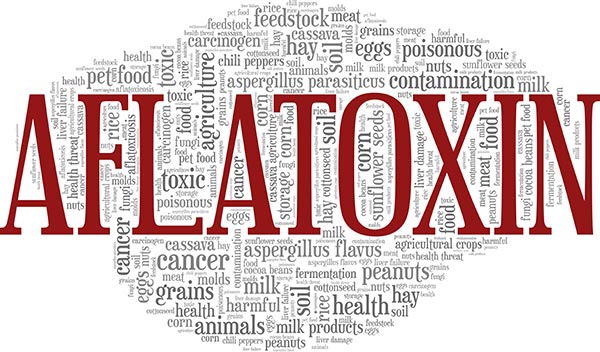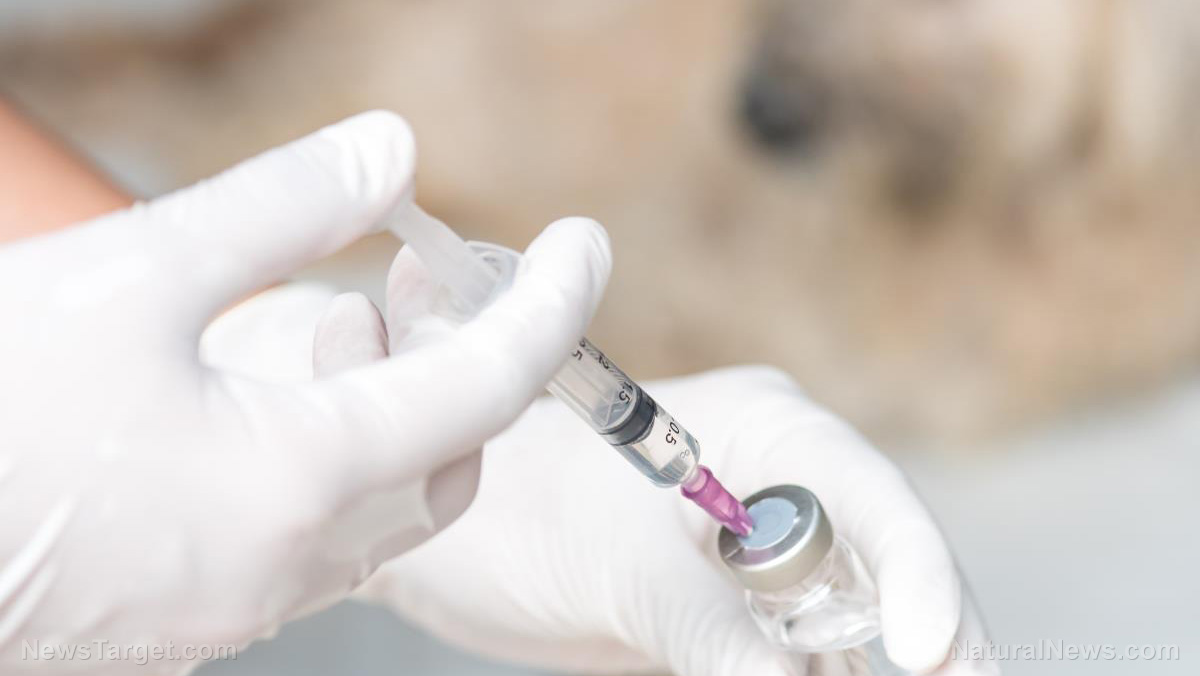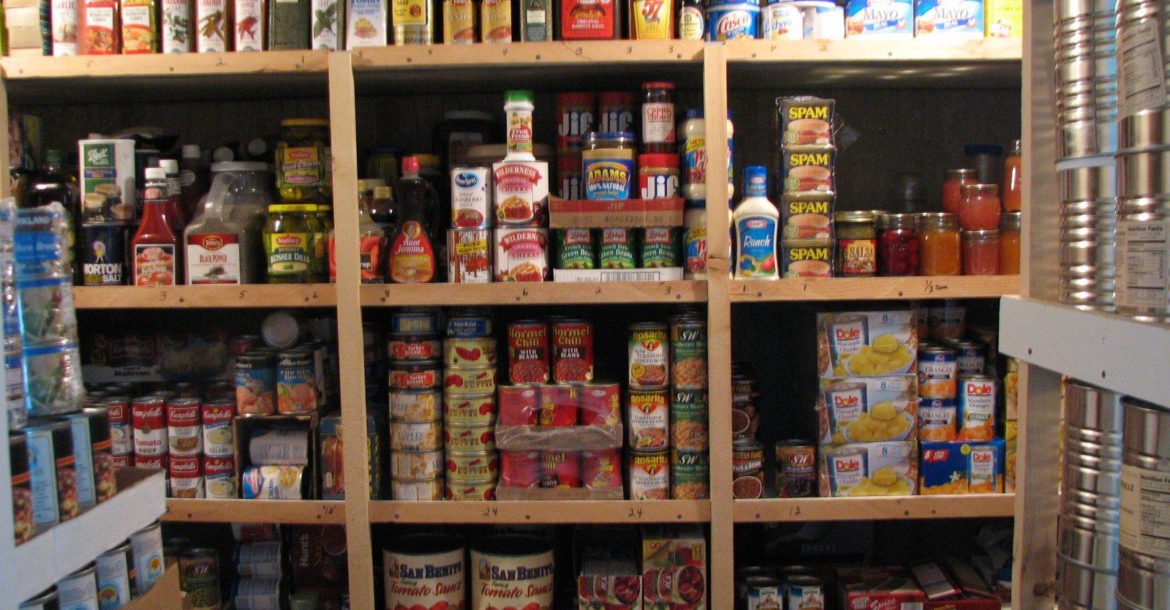Here’s everything you need to know about aflatoxins
09/07/2022 / By Olivia Cook

Aflatoxins are among the most well-known mycotoxins that are naturally produced by certain types of fungi (molds). According to StatPearls, aflatoxins are created by toxigenic strains of molds that grow and thrive in soil, hay, decaying vegetation and grains. They attack many crops in the field and contaminate them during production, harvest, storage and processing.
The Joint FAO/WHO Expert Committee on Food Additives (JECFA), the international body responsible for evaluating health risks from natural toxins, said aflatoxins pose a serious and severe health threat to both humans and livestock from acute poisoning to long-term effects, such as immune deficiency and cancer. Consuming food with extremely high levels of aflatoxin can lead to instant death.
Aflatoxin B1 (AFB1), AFB2, AFG1, and AFG2 are four major aflatoxins of the identified 20 types that are frequently found in agricultural commodities worldwide, particularly in tropical and subtropical regions. Aflatoxin M1 (AFM1), a product of aflatoxin B1 (AFB1) metabolism produced by mammals following their consumption of AFB1-contaminated food or feed, has been detected in milk from areas with a high level of aflatoxin exposure.
Aflatoxins are among the most poisonous mycotoxins and are commonly found in cereal (corn or maize, sorghum, pearl millet, wheat and rice), oilseeds (groundnut, soybean, peanut, sunflower and cotton seeds), spices (chili peppers, black pepper, coriander, turmeric and ginger) and tree nuts (almond, coconut, pistachio, walnut and Brazin nut). (Related: How the environment may be promoting cancer and how you can reduce these effects.)
People can be exposed to aflatoxins by eating contaminated plant products or by eating meat or dairy products, including breast milk, particularly in areas where substandard grain is used for animal feed. Mothers can transmit aflatoxin to their children through breastfeeding. Farmers and other agricultural workers may be exposed by inhaling dust generated during the handling and processing of contaminated crops and feeds.
The economic consequences can also be serious and severe. Crops confirmed to be contaminated cannot be consumed, sold or exported and have to be destroyed.
Aflatoxins pose health risks in people and animals
Studies have shown that when humans and animals are exposed to even small amounts of aflatoxins over an extended period of time, they develop a wide range of serious health problems.
Health risks in people
In a study published in the Encyclopedia of Toxicology (Third Edition), exposure to high doses of aflatoxins can cause aflatoxicosis in humans, especially in areas stricken by poverty, drought and other conditions for plants, with the liver as the target organ.
Researchers have associated aflatoxin toxicity with hepatocellular damage and death of body tissues (necrosis), decrease or obstruction of bile flow (cholestasis), malignant tumors of the liver (hepatomas), acute inflammation of the liver (hepatitis), hemorrhage, jaundice, fatty liver changes, scarring and permanent liver damage (cirrhosis) in malnourished children and kwashiorkor, a severe form of malnutrition in babies and children.
Aflatoxin can lead to growth impairment, manifested as underweight malnutrition and stunting. These effects are irreversible and remain for life. (Related: Chronic exposure to aflatoxins is linked to numerous health problems, such as cancer and kidney damage.)
Health risks in animals
A study that appeared in the journal Reviews of Environmental Contamination and Toxicology has found that aflatoxin-linked adverse health effects occur in animals, livestock, poultry, aquatic animals and other species through feeding or dietary contact because aflatoxins are potent hepatotoxins, mutagens, carcinogens, immunosuppressants and teratogens.
According to the Michigan Department of Agriculture & Rural Development, pets experiencing aflatoxin poisoning show sluggishness, loss of appetite, vomiting, a yellowish tint to the eyes or gums and/or diarrhea. In severe cases, aflatoxin toxicity can be fatal.
In chickens fed with contaminated feed, researchers found aflatoxin-induced liver damage, decreased productivity and reproductive efficiency, decreased egg production, inferior eggshell quality, inferior carcass quality and increased susceptibility to disease.
Pigs are also highly susceptible to aflatoxins, with the majority of the chronic effects manifesting as liver damage.
In cattle, the primary symptoms exhibited are decreased weight gain and liver and kidney damage, as well as decreased milk production.
How to be safe from aflatoxin
Aflatoxin has no color, flavor or smell. It can only be detected through laboratory testing, which is why it is easy to unknowingly consume contaminated food.
Researchers in a study published in the journal Frontiers in Microbiology concluded that aflatoxin’s contamination of crops often consumed in day-to-day life at pre- and post-harvest conditions can be controlled to some extent by the implementation of good agricultural practices, good manufacturing practices and good storage practices.
Good agricultural practices to reduce contamination and keep crops safe include using good and certified seeds, keeping the fields clear of weeds, harvesting the crops when well-dried, sorting the crops to remove immature pods or cubs damaged by birds or rodents before drying and storage, preventing grains from contact with the soil by drying crops on raised platforms or on mats and storing all crops in a cool and dry place that is safe from rain and free from insects and pests.
There is no grain that is totally safe from mycotoxin contamination and cooking the grain will not decrease the levels of mycotoxins by a large margin. But consumers can do the following to reduce the risk of exposure:
- Inspect whole grains, dried figs and nuts – which are all regularly contaminated with aflatoxins – for signs of mold. Discard those that appear moldy, discolored or shriveled.
- Buy grains and nuts as fresh as possible.
- Make sure that foods are stored properly, kept dry and free of insects and pests.
- Detoxify your bodies routinely. A simple way of accomplishing this is by eating organic apples and drinking a lot of pure water.
- Ensure a healthy, diverse diet. It helps reduce the consumption of aflatoxin-contaminated food and also improves overall nutrition. Consume more garlic, spices and other seasoning ingredients that reduce and prevent mycotoxins.
In general, you should not eat too much foods that are prone to aflatoxin contamination.
Visit Toxins.news for more news related to common food toxins.
Watch the video below about the microbiome’s role in protecting the host from mycotoxins.
This video is from the CAT channel on Brighteon.com.
More related stories:
FOOD QUIZ: How many of these 9 surprisingly common FOOD TOXINS do you consume regularly?
Mycotoxins are contaminating these 10 food staples.
Mycotoxins: What are they and why are they bad for you?
Sources include:
Submit a correction >>
Tagged Under:
aflatoxicosis, aflatoxin, agriculture, clean food watch, crops, Ecology, environment, food science, food toxins, fungi, grocery, harvest, molds, mycotoxins, poison, products
This article may contain statements that reflect the opinion of the author
RECENT NEWS & ARTICLES
COPYRIGHT © 2017 PET HEALTH NEWS




















